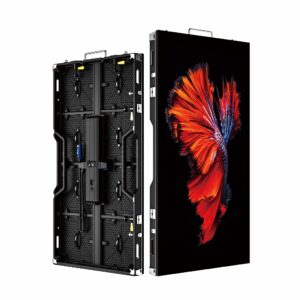In today’s world, where technology is advancing at a rapid pace, it’s not surprising that displays are getting better too. From small phone screens to huge billboard displays, every display needs to be crystal clear and visually appealing. This is where SMD screens come in, which are taking the display industry by storm. In this article, we’ll discuss what SMD screens are, their advantages, and why they are the future of display technology.
What are SMD Screens?
SMD stands for Surface Mount Device, and SMD screens are a type of LED display technology. They are made up of thousands of tiny, light-emitting diodes (LEDs) that are mounted onto a printed circuit board (PCB). These LEDs are extremely small, and they can produce vivid and bright colors. They are also capable of displaying images and videos with high resolution and refresh rates.
SMD screens are used in a variety of applications, such as indoor and outdoor displays, stage displays, sports displays, and digital signage. They can be seen in shopping malls, airports, stadiums, and even on the sides of buildings.
Advantages of SMD Screens
- High Brightness and Vivid Colors: SMD screens are capable of producing high brightness levels, which makes them suitable for outdoor displays. They can also produce vivid colors, which make the images and videos displayed on them look more vibrant.
- High Resolution: SMD screens have a high pixel density, which means that they can display high-resolution images and videos. This makes them suitable for applications where clarity is important, such as in medical displays and control room displays.
- Energy Efficient: SMD screens are energy-efficient, which means that they consume less power than traditional displays. This makes them more environmentally friendly and can save businesses money on their energy bills.
- Wide Viewing Angles: SMD screens have a wide viewing angle, which means that the images and videos displayed on them can be seen from almost any angle. This makes them suitable for applications where a large audience needs to view the display, such as in stadiums and public spaces.
- Easy to Install and Maintain: SMD screens are easy to install and maintain. They come in modules, which can be easily connected to create a larger display. They also have a long lifespan and require minimal maintenance.
Why are SMD Screens the Future of Display Technology?

- Versatility: SMD screens are versatile and can be used in a variety of applications. They can be used indoors and outdoors, and they can be customized to fit almost any shape and size.
- Increasing Popularity: SMD screens are becoming increasingly popular due to their high-quality display and energy efficiency. As more businesses and organizations adopt SMD screens, the cost of production is likely to decrease, making them more affordable for smaller businesses.
- Advancements in Technology: As technology continues to advance, SMD screens are likely to become even more advanced. This means that they will become even brighter, more energy-efficient, and capable of displaying even higher resolutions.
- Enhanced Interactive Features: SMD screens can be made interactive, which means that users can interact with the display through touch or gesture recognition. This makes them suitable for applications such as interactive digital signage, gaming displays, and even virtual reality.
- Environmental Benefits: SMD screens are environmentally friendly, which means that they produce less carbon emissions than traditional displays. This is becoming increasingly important as more businesses look to reduce their carbon footprint.
Conclusion
SMD screens are the future of display technology. They offer a high-quality display, energy efficiency, and versatility. They are becoming increasingly popular, and as technology continues to advance, they are likely to become even more advanced.


